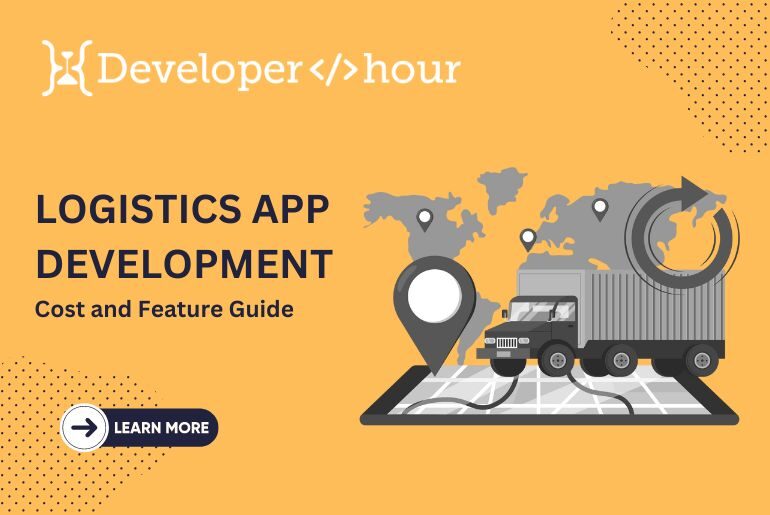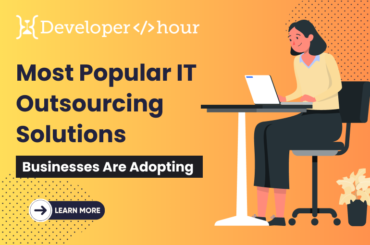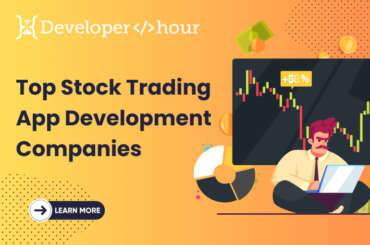Logistics Mobile App Development Guide – With the increasing population and their needs, the commodities industry is experiencing a sharp spike in business. New brands are entering the market daily with unique and valuable products, attracting a million user base. No matter how they perform or compete in the competitive market, one thing will be constant and i.e., logistics. With the increasing demand for products, handling the logistics, delivery, storage, security, tracking, etc. has become too complicated and complex. In this landscape, logistics mobile apps have greatly relieved all businesses.
Logistics Mobile Apps – An Overview
The term refers to software that takes care of the inventory so the sender and receivers do not have to worry about their commodities. Whether fleet tracking, shipment management, transportation, real-time monitoring, analysis, or anything, a logistic mobile app covers it from top to bottom. These logistics mobile apps have been an excellent resource for companies managing their fleet and third-party warehouse service providers to keep track of all the inventories for their clients securely. At the same time, one can know the inventory condition’s location, communicate with all the respective stakeholders, and much more.
Today in this blog, we will discuss mobile logistics app development, its functional features, and why you should invest in developing one for you.
- Logistics Mobile Apps – An Overview
- What are The Types of Logistics Mobile Apps
- The Benefits of Logistics Mobile App Development
- Leading Logistics Mobile Apps in The Market
- Why Invest in Logistic App Development – Industry Size and Stats
- How Logistics Mobile Apps Make Money
- Key Features to Consider While Developing Logistics Mobile Apps?
- Additional Advanced Features
- What Technologies Required to Develop Logistics Mobile Apps
- How Much Does IT Cost to Develop Logistics Mobile App?
- Wrapping Up

What are The Types of Logistics Mobile Apps

- On-Demand Logistics Mobile App – On-demand delivery logistics apps are mobile apps that provide real-time, on-demand delivery services for customers. These apps allow customers to order a product or service and deliver it to their location quickly. The delivery is typically performed by a driver or delivery person who is dispatched through the app to pick up and deliver the order. On-demand delivery logistics apps aim to provide customers with a convenient and efficient delivery experience while also helping businesses increase their sales and reach new customers through the app. By leveraging the latest mobile technologies, on-demand delivery logistics apps have revolutionized how companies and consumers interact, making receiving the products and services they need easier and faster than ever before.
- 3PL (Third-Party Logistics) Management Apps: used by third-party logistics providers to manage shipments for multiple clients.
- Delivery Management Apps: used by delivery companies to manage their fleet and track shipments.
- Warehouse Management Apps: used by warehouses to manage inventory and track shipments.
- Route Optimization Apps: used to optimize delivery routes based on real-time traffic, delivery schedules, and other factors.
- Freight Management Apps: used by freight companies to manage shipments and track cargo.
- Supply Chain Management Apps: used to manage the entire supply chain process, from sourcing to delivery.
- Fleet Management Apps: used to manage and track commercial vehicles, including their location, fuel consumption, and maintenance.
- Package Tracking Apps: used by consumers to track the status of their shipments.
- Shipping Calculator Apps: calculated shipping costs based on weight, dimensions, and destination.
- Reverse Logistics Apps: used to manage returns and recycling of goods.
- Dispatching and scheduling apps:
- Yard management apps:
- Freight matching apps:
- Asset tracking apps:
- Maintenance and repair apps:
- Customer relationship management (CRM) apps:
The Benefits of Logistics Mobile App Development
Advantage to Businesses
Benefits to Customers
- Improved efficiency & productivity
- Real-time tracking & monitoring
- Enhanced customer experience
- Streamlined processes
- Increased transparency & communication
- Accurate data management
- Cost savings
- Better decision-making through data analytics
- Increased competitiveness & market visibility
- Automated processes and reduced manual errors.
- Real-time tracking & updates
- Convenient delivery scheduling
- Easy access to order information
- Improved transparency
- Enhanced customer service
- Faster delivery times
- Better delivery accuracy
- Ability to rate and provide feedback on delivery
- More environmentally friendly delivery options
- Automated delivery notifications.
Leading Logistics Mobile Apps in The Market
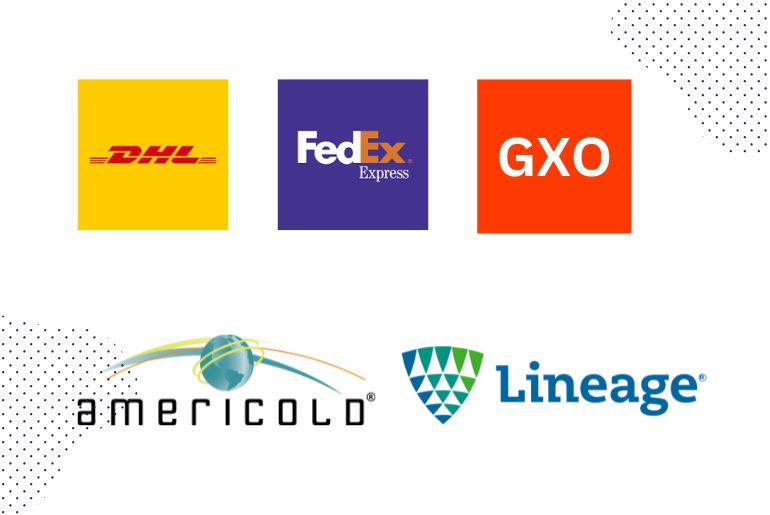
The logistics market and technological solutions in this landscape are not new. There are several apps and software which have smoothed the logistics sector. Each app has dedicated functionalities that help the operator in various ways. Let’s have a look at some of the leading logistics mobile apps along with the value they are adding to their target audience-
DHL Express Mobile

The app has more than a million downloads on Google Play Store alone, with its presence on the Apple App store. The company has been operating for over 50 years in 220 countries. The firm helps different-sized businesses to deliver their inventories to their customers. The mission of DHL Express mobile is to invest a lot in employees, support social initiatives and take steps toward sustainable logistics.
Core competencies of DHL Express Mobile
- With this app, the sender and receiver can follow the package closely to know the location, dispatch date or time, and expected delivery date or time.
- Customers can set their delivery preference if they don’t prefer direct contact with the delivery agent.
- Pay the required import duties and VAT online.
- Changes deliveries with On-Demand Delivery.
FedEx

The company provides small package ground delivery services, less-than-truckload freight services, residential delivery services, in-store services, and other business solutions. The company also has a mobile app available for android and iOS users. Similar to the previous one, user can track their package and estimate the dispatch and delivery time for the same.
Core competencies of FedEx
- One can easily track the shipment from either side.
- Quick rate as well as transit time quotes.
- Schedule and manage the pickups.
- Create an international shipment.
- Find FedEx locations.
- Seamless support from help icons and customer service.
GXO Logistics

The firm is known for its logistics movement services for B2B and B2C customers. The firm has warehouses at 950 different locations. More than 130K team members work with GXO Logistics in 27 countries. The firm also has a mobile app with more than 300k downloads.
Core competencies of GXO Logistics
- Forecasts carrier buy and sell capacity by analyzing data history and market conditions.
- Critical visibility of shipments in transit.
- Managed transportation for vaccines, therapeutic drugs, and other particulars.
Americold

Americold is known for its 120 years old technology-based engineered solutions for providing temperature-controlled supply chain services. The firm operates in more than 240 locations worldwide and has transported more than a trillion pounds of product. The firm has transported more than a trillion pounds of products online over their entire supply chain.
Core Competencies of i-3PL
- Up-to-the-minute pictures of inventory
- Real-time, self-service supply chain control
- Online appointment scheduling for carriers
- Order management with exception alerts
- On-demand reporting
- Access information on the entire inventory volume
- Network-wide inventory visibility
- Available from any web-enabled smart device
Lineage Logistics

Lineage Logistics is popular for its range of services which includes cold storage, post-centric warehousing, automated warehousing, fresh & perishable solutions, dedicated warehousing, retail consolidation, cross-docking, direct-to-consumer fulfillment, order management, inventory management, appointment scheduling, and much more. Other than these, the firm’s core competencies are blast freezing, case picking, full EDI capabilities, USDA Inspection Services, FDA Inspection Services, Customs Labeling & Stamping, SQF certification, WMS Technology, GDP Audit Certification, 24/7 Operation capabilities, BRCGS Accreditation.

Why Invest in Logistic App Development – Industry Size and Stats
The talk about the benefits of having a logistic mobile app will be long. First comes the question of why one should invest in the mobile app. Some random statements might not convince one to put such a hefty amount in a mobile app. So, here are some facts and figures that might help you make this decision.
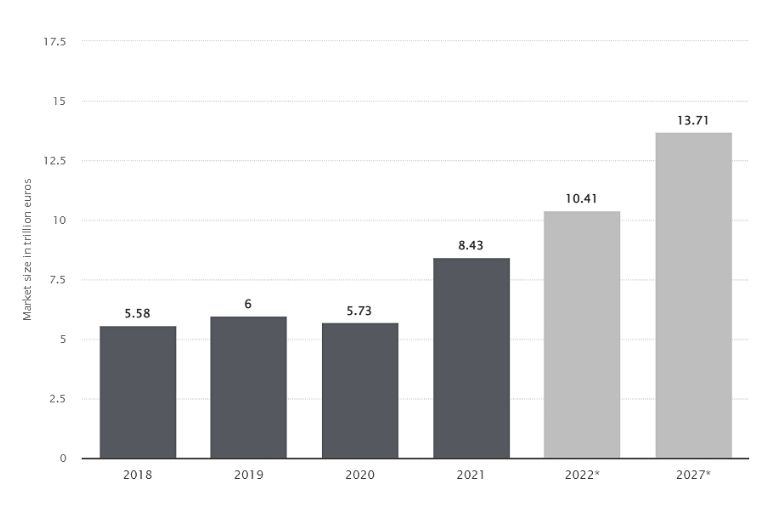
- The Global logistics market size is worth $8.4 Trillion.
- At the same time, the global contract logistics market size is worth EUR 237.5 billion.
- The secure logistics market has been valued at $25.22 billion with a CAGR of 35%.
So, there is no doubt that the logistics industry is an ever-growing market with a lot of space for new initiatives and technology to enhance operational capabilities and smoothness.
How Logistics Mobile Apps Make Money
How to Monetize Logistics Mobile App?
Subscription fees: Some logistics mobile apps only offer premium features to customers who pay a monthly or yearly subscription fee.
Commission fees: Freight matching apps and other logistics mobile apps that connect shippers and carriers can earn money by taking a commission on each successful transaction.
Advertising revenue: Logistics mobile apps can earn money by selling advertising space to relevant businesses or by including advertisements within the app.
Enterprise solutions: Some logistics mobile apps offer enterprise solutions for larger companies, which often include additional features and support, and may be sold on a license or subscription basis.
Data and analytics services: Logistics mobile apps that collect and analyze large amounts of data can offer companies data and analytics services, helping them optimize their logistics operations and make better business decisions.
Integration with third-party services: Logistics mobile apps can earn money by integrating with other third-party services, such as payment providers or shipping carriers, and taking a commission on transactions made through those integrations.
Key Features to Consider While Developing Logistics Mobile Apps?
The features define the capabilities and usability of a mobile app it carries, or we can say that the features of a mobile app are fundamental. However, the types of features are decided by the app owner; there are some of the features that every logistic mobile app must carry. Depending on the model type, let’s discuss some must-have features before starting the logistics mobile app.
Customer Panel – Logistics App Development
The customer panel is the app’s model, designed for the end customers who seek the service. It is the most used model of the app, which every common user in the target audience uses. Features that the customer panel model of the logistics mobile app must carry are but are not limited to-
| Features | Description |
| Registration & Create Profile | The feature allows the customers to create their profiles to place requests and connect to the providers and drivers. |
| Save Delivery address | With this feature, customers can save the delivery address they often use. |
| View vehicles availability | Customers should be able to check the vehicles’ availability to transport their logistics. |
| Choose vehicle type | The feature helps the customers to choose the type of vehicle they want to book according to the type and size of their logistics. |
| View fare estimation | Even before confirming the booking, the customer must be free to access the estimated price of available services so they can make the decision accordingly. |
| Book a vehicle | The app must carry the booking feature that allows customers to confirm the booking of the vehicle. |
| Access estimated time of arrival | Estimated arrival time must be available for the customers to keep their logistics ready according to the time. |
| Manage/Schedule the trip | With this feature, customers can manage their different upcoming trips. |
| In-app calling feature | The app should carry a calling feature where customers can connect to the driver without saving their numbers or giving away their numbers. |
| Rating and reviews | The customers must have the option to give and view drivers’ reviews and ratings. It can help the other customers to make the right decision. |
| Cancel the bookings | The mobile logistics app carries a feature where they can cancel a booking within an extended time before starting the trip. |
| Booking history | This feature allows the customers to access their booking history and all the related details for future use. |
| Payment gateway | The app carries a secure payment gateway so customers can make the necessary payments via the app only. |
| Email or SMS option | Along with the calling option, there must be an arrangement for the text and email to interact with the driver or dispatcher. |
| Driver detail | One of the most important features is that the customer should be able to access basic detail about the driver and the rating and reviews they have received from their previous clients. |
Logistics App Development – Driver/Dispatcher Panel
The app panel model, which the drivers of supply chain vehicles use, is known as the driver panel model of the app. It must carry the following features-
| Features | Description |
| Login and registration | Just like the end customers, the drivers should also be able to create their profiles by inputting the necessary details. |
| Voice control | The driver might need to use the app while driving and thus it must support the voice control feature so they can verbally operate the app. |
| Notification | The app should notify the driver when they get a trip request from the customer. |
| Logbooks and current tasks | This feature lets the drivers know about the orders, destination, and delivery status. |
| Route optimization | The app should use AI/ML for route optimization according to traffic, weather, tolls, etc. |
| Navigation | The navigation feature allows the driver to access the best route to reach the destination in the least time. |
| Videos and photos | The driver should be able to take pictures and videos of logistics before as well as after the shipment. |
| QR code scanning | QR code scanning minimizes the physical paperwork as shipment tracking, including loading/ en route/ unloading delivery, and much more can be done with the code only. |
| Interconnectivity | The app should support the calling, text, and email features so drivers can interact with other parties effectively. |
Admin Panel – Logistics App Development
The admin panel is the one which the owner of the app accesses. It carries features like-
| Features | Description |
| Dashboard | The admin panel dashboard provides critical information related to drivers and customers. At the same time, this dashboard also displays the details about pending and completed orders along with real-time data. |
| Fleet/vehicle management | The feature allows the admin to introduce new vehicles for shipment and update the existing ones with new images. |
| Driver management | The admin can access different drivers’ orders, status, and tasks. |
| Tracking | The panel allows the admin to track the route of vehicles running on the different projects and provide the necessary information to relevant stakeholders. |
| Order management | The feature allows the app admin to manage customer orders and direct them to available drivers. |
| Revenue and expense management | The admin can access the complete portfolio of transactions between the stakeholders. |
| Push notification | Admin instantly gets notifications about new tasks, queries, feedback, and much more. |
Additional Advanced Features
Besides the regular feature, an app has to provide unique features as its Unique Selling proposition to attract the target audience toward themselves in this competitive market. So, here are some of those advanced features defined for a logistics mobile app-
- Chatbot integration
Communication plays a core role in establishing a strong professional relationship. So, a logistic mobile app must carry a Chabot integration that instantly entertains the queries, feedback, and complaints of the different stakeholders.
- In-app chat and calling.
In-app chat and calling feature allows the different parties involved in the deal to communicate with each other without using personal contact information. This feature elevates the connectivity among the stakeholders and enhances the user experience.
- In-app camera
The app should have camera support so that the driver and customer can upload the logistic photograph when demanded from another side. This feature helps to make the deal more reliable for both parties.
- In-app navigation
In-app navigation helps fleet drivers find the best routes for the delivery address and navigate the route. So, it eliminates the need for a third-party navigation app for the driver and streamlines the process.
- CRM integration
CRM integration helps customers to find the best service, service provider, and facilities according to their demands, preferences, budget, and needs. Having compared the different factors of the deal, it helps carry out the best for the customer and ensures a strong professional relationship.
- Real-time analytics and dashboards
Having all the insight in one place can enhance the decision-making power of all the stakeholders involved in the deal. For example, if the dashboard carries all the information about the driver, including the personal details, completed trips, expertise with the type of vehicle, driving skills, cost, and rating from previous customers, it will be much easier for the customers to decide if it fits according to their needs or not.
What Technologies Required to Develop Logistics Mobile Apps
The technologies required to develop a mobile logistics app can vary depending on the specific features and requirements of the app, but some of the most common technologies include:

Mobile app development frameworks: This can include technologies such as React Native, Xamarin, or Flutter, which are used to build cross-platform mobile apps.
GPS and mapping technologies: To provide real-time tracking and route optimization, logistics mobile apps typically rely on GPS and mapping technologies, such as Google Maps API or OpenStreetMap.
Cloud computing: Logistics mobile apps often use cloud computing to store and process large amounts of data, such as delivery tracking information or inventory levels.
Databases: To store and manage data, logistics mobile apps typically use databases such as MySQL, PostgreSQL, or MongoDB.
Push notifications: Logistics mobile apps often use push notifications delivered directly to users’ devices to provide real-time updates to customers and drivers.
Payment integration: Logistics mobile apps may integrate with payment providers such as PayPal or Stripe to support payment transactions.
Security: To protect sensitive data, such as customer information or payment details, logistics mobile apps should incorporate robust security measures, such as encryption, secure socket layer (SSL) certificates, and firewalls.
Artificial Intelligence and Machine Learning: To improve the efficiency and accuracy of logistics operations, logistics mobile apps may use AI and ML technologies, such as computer vision, natural language processing, and predictive analytics.
Few Futuristic Technologies to Consider
Augmented Reality (AR): To enhance the user experience, some logistics mobile apps may use AR technology to provide interactive and immersive visualizations of delivery locations and routes.
Internet of Things (IoT): To monitor and track assets in real-time, some logistics mobile apps may use IoT technologies, such as sensors and GPS tracking devices, to provide real-time data about the location and condition of vehicles, trailers, and other equipment.
Blockchain: To improve the transparency and security of logistics transactions, some logistics mobile apps may use blockchain technology to track deliveries, payments, and other logistics-related transactions securely.
Wireless communication protocols: To support communication between drivers, vehicles, and customers, logistics mobile apps may use wireless communication protocols, such as Bluetooth or Wi-Fi, to send and receive real-time data.
Data visualization tools: To help logistics companies better understand and manage their operations, logistics mobile apps may use data visualization tools, such as charts, graphs, and dashboards, to present complex data in an easy-to-understand format.
Backend APIs: To facilitate communication between the front-end mobile app and the backend systems, logistics mobile apps may use APIs, such as REST or GraphQL, to securely exchange data and trigger actions between the mobile app and backend systems.
How Much Does IT Cost to Develop Logistics Mobile App?
First, let’s be clear that there is no price tag that you can stitch to Logistics Mobile app development. Like you can buy any product in different price ranges depending on the quality and availability, mobile app development also depends on various factors. These factors influence the cost of mobile development to a significant extent. So, as long as you have not decided on these factors, you cannot expect to get a fixed cost.
The factors that determine the cost of a logistics mobile app development are-
| Factors | Description |
| The complexity of the app | Your app’s complexity will influence your cost of app development significantly. The more complex the app is, the more the cost will be. |
| A Number of Features | The number of features is also directly proportional to the app development cost. Your budget will also need flexibility if you want to see several features. |
| Type of features | Normal and basic features will cost you an average price, while installing advanced features can significantly add to your cost estimation. |
| Geographic location | Geographic location also plays a big role in app development costs. For example, hiring developers from the United States can cost you a lot more than hiring developers from Asian countries. |
| Hourly rate of developers | When you are hiring developers on a freelance or hourly basis, a developer’s hourly rate will determine the cost of your app development. |
| User interface and design | Undoubtedly an exemplary user interface and experience can deliver significant benefits but at the same time, it can add some dollars as well to your cost. |
| Platforms | The platform you are designing the app for will also determine the cost of app development. The platforms include iOS, Android, and others. |
| Backend Infrastructure | If your backend infrastructure is complicated, you must be ready to pay extra costs. |
| Integration | If you want more API and third-party integration in your app, it will increase your app development cost. |
| Maintenance and support | Expecting the post-deployment maintenance and support will cost you extra as long as your development partners are not running a free support scheme. |
Wrapping Up
While binding up the article, we can conclude that the logistics mobile apps have entirely changed the supply chain and logistics sector scenario. Whether or not you are already in the relevant business, logistic app development can be an excellent revenue-generating opportunity. The logistics mobile app streamlines the business process of transporting inventories. Thus, it has become a go-to platform for customers who want to transport their logistics, drivers who want to get more business, and commodities companies that offer the home delivery of their products.
If you have a vision about the same, we can choose your app development partner with our expertise in the domain. Feel free to contact us for discussing the idea or taking it to the next step.

